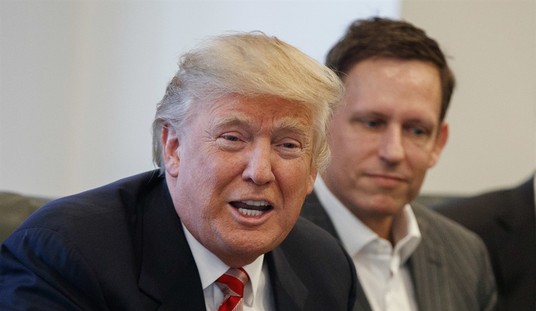A report from the U.S. Commission on Civil Rights released Thursday reveals that segregation in public schooling is still disturbingly prevalent, with black and latino students often schooling in subpar conditions.
The commission said inequities are caused by the fact that schools are most funded with state and local tax dollars. More than 92 percent of funding comes from nonfederal sources, according to the Education Department.
The resulting imbalance renders “the education available to millions of American public school students profoundly unequal,” the commission said.
For instance, the authors said, 33 percent of high schools with high black and Latino enrollment offer calculus, compared with 56 percent of high schools with low black and Latino student populations. Nationwide, 48 percent of schools offer the rigorous math course.
On average, school districts spend around $11,000 per student each year, but the highest-poverty districts receive an average of $1,200 less per child than the least-poor districts, while districts serving the largest numbers of minority students get about $2,000 less than those serving the fewest students of color, according the study.
The authors called on Congress to create incentives for states to adopt equitable funding systems, to ensure adequate funding for students with disabilities and to increase federal funding to supplement local dollars for school districts that are underfunded.
“The reality is that the United States does not offer the educational opportunity that is consistent with our ideals,” commission chair Catherine Lhamon told the AP. “That’s appalling and it’s dangerous and all of us need for it to change.”
As someone who has worked in the education system and has had children in both inner city and suburban schools, I can anecdotally back up the notion that segregation is still a huge problem. Certainly, income levels and the dependency of public schools on tax dollars play a large – if not the largest – factor in the disparities. Our current suburban schools want for nothing. Our former inner city school didn’t have air conditioning and the playgrounds were more like a graveyard of trash and outdated equipment.
Commission chair Catherine Lhamon is absolutely correct to describe this situation as “appalling and dangerous”. She wants an “equitable” funding system to help catch up lower-income districts.
Like many people who rely on the government for their livelihood, Lhamon’s solution to the problem is just more money. However, more money isn’t necessarily the issue. For instance, some of the lowest performing school districts in the nation (Detroit, Chicago) receive the most dollars per student. In a response to actress Jenna Fischer’s concerns about school funding I outlined a gigantic problem with our current system of funding. Nearly every state in the country is increasing the number of off-site administrators at a rate that vastly outpaces the increase in student population. In fact, in Louisiana the student population actually decreased even as the administrative hires increased significantly.
We don’t have a money problem, we have a spending problem.
There is a solution that, though unfortunately the solution pits the people in government who think they know what’s best for us against…well, US.
School choice.
If you do a web search on “school choice” and “desegregation” you’ll come up with all kinds of opinions and vague reports of choice increasing segregation. Without even bogging you down in statistics (which are still fairly sparse as choice programs are quite new and reliable data is still being collected), one only needs to apply common sense to the equation to see that choice in education can absolutely lead to greater diversity in schools and also a greater diversity of programs to choose from.
Why are inner city minorities stuck in failing schools? One reason is that if they don’t live in the right district, they aren’t allowed to send their child to other public schools that might be thriving. It’s illegal. If you can’t afford to move to the suburbs or pay for a private program, you’re stuck where you are and your child becomes a tennis ball in the never ending lobbing match between teacher’s unions and the government budget office. If zip code is the determination of the quality of your public education, maybe we should just get rid of the zip codes.
By allowing parents the freedom to choose what school in their area is best for their child, we are allowing them to escape their zip code without having to make an unaffordable move to a place they may not really want to be anyway. We desegregate by making education about the particular needs of a particular student rather than a geographical location.
An argument often used against this idea is that it might trigger some sort of “white flight”. However, the problem with this logic is that it doesn’t take into account that everyone will have a choice. A voucher program (just one of many options in the school choice universe) would mean that Mary’s kid from Compton could go to the same school Barb’s kid from Beverly Hills decided to “flee” to…be it public or private. It evens the playing field by simply letting parents determine their child’s educational options rather than a nameless, faceless bureaucracy.
Another argument is that this system would drain money from the public schools. This is one of the more ignorant arguments. Most people aren’t aware that in choice systems, the public schools still receive up to half of the funding per student who chooses a different school. They’re actually making money on the proposition by not having to service the pupils they’re being paid for.
Unsurprisingly, the Department of Education under Betsy DeVos agrees with me.
Education Department spokeswoman Liz Hill said the commission’s findings underscore the need for reform. Promoting charter schools, voucher programs and other forms of school choice are key goals of Education Secretary Betsy DeVos.
“This is further proof that too many children, simply because of where they live, are forced to attend schools that do not provide an equitable education,” Hill said in a statement. “Secretary DeVos has made clear her mission is to ensure every child has the opportunity to attend a school that offers an excellent education that meets their individual needs.”
Whether channeling more money to schools in underserved communities will help improve the quality of education is a subject of academic debate.
Giving parents more control over their educational dollars also discourages administrative budget abuses. There is less room for horseplay and outright thievery.
When we give parents and students options, segregation becomes a non-issue. School populations become determined by the needs of those schools claim to serve instead of bureaucratic entities who never set foot in a classroom in any given community.
It’s a simple solution only made complicated by greed and those who wish to maintain the status quo.













Join the conversation as a VIP Member